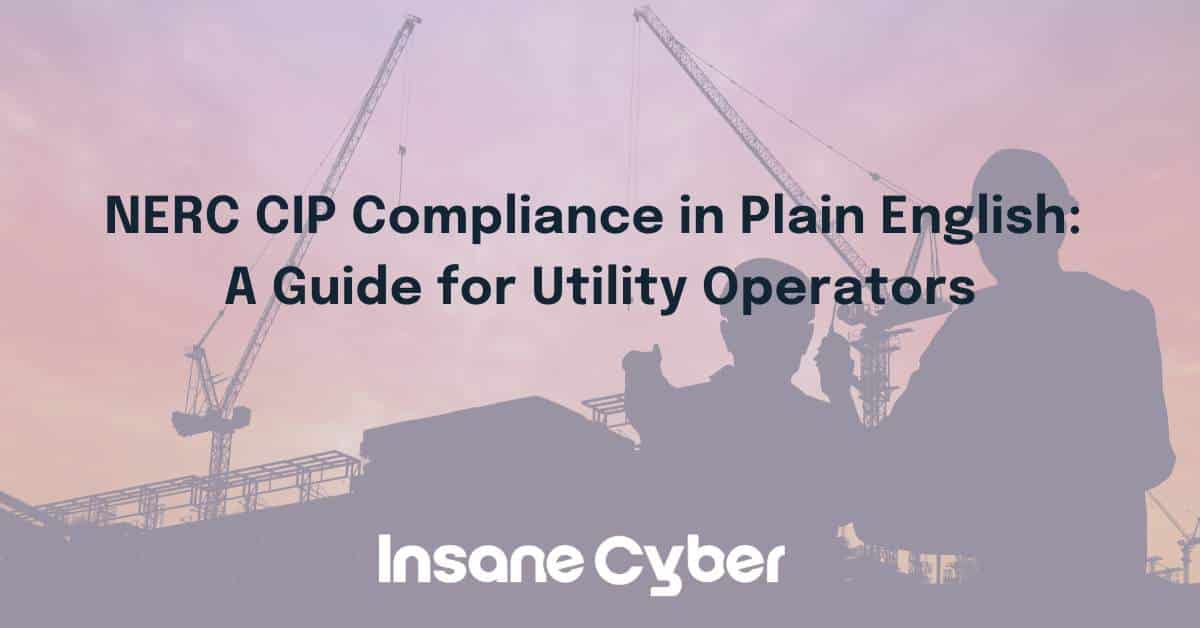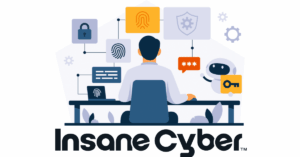NERC CIP Compliance in Plain English: A Guide for Utility Operators
The world of utility operations is complex enough without adding a dictionary of dense regulatory requirements. For many, the North American Electric Reliability Corporation’s Critical Infrastructure Protection (NERC CIP) standards can feel like a labyrinth of technical jargon and demanding rules. But at its core, NERC CIP is about one thing: keeping our bulk electric system safe and reliable. This guide will break down what NERC CIP means for you, the utility operator, in straightforward terms.
What is NERC CIP and Why Does It Matter to Me?
Think of NERC CIP as a set of rules designed to protect the nation’s power grid from physical and cyber threats. As a utility operator, you are on the front lines of this critical infrastructure. Whether you’re in a control room, a substation, or out in the field, your work is essential to keeping the lights on for millions of people.
These standards are not just suggestions; they are mandatory and enforceable, with significant financial penalties for non-compliance. But beyond the fines, following NERC CIP is about safeguarding your facilities, your community, and the stability of the entire grid.
What’s New in NERC CIP? Key Updates You Need to Know
Staying compliant with NERC CIP isn’t a one-and-done task—the rules evolve as new threats and technologies emerge. So, what’s the latest on the regulatory front?
Recently, the Federal Energy Regulatory Commission (FERC) approved an important update: CIP-015-1, which brings Internal Network Security Monitoring (INSM) to the forefront. Here’s what you, as a utility operator, need to know:
- Who does this affect? High-impact cyber systems across all facilities now require INSM, regardless of how those systems connect to outside networks. For medium-impact systems, this applies if they interface directly with external networks.
- What’s new? The key shift is monitoring not just your perimeter defenses, but what’s happening inside trusted areas of your network (think of the Electronic Security Perimeter). This means keeping a watchful eye out for anything suspicious that may slip through the cracks, giving you a better shot at catching threats early.
Looking ahead, FERC has also instructed NERC to widen these monitoring requirements even further next year. By mid-2026, systems managing physical or electronic access—even those outside your core perimeter—are also set to come under this rule’s umbrella. This move follows real-world incidents where attackers used access controls as their gateway into critical networks.
In short, regulators are shining a spotlight inside the castle walls—so staying ahead means monitoring within as much as around your systems.

How Real-World Events Shaped NERC CIP Standards
But why did all these rules come to exist in the first place? The story of NERC CIP is, in many ways, a story of lessons learned—the hard way.
Take 2003, for example. One summer day, a seemingly harmless chain of events in Ohio triggered a gigantic blackout, plunging much of the Northeast—including bustling cities like New York—into darkness for days. Suddenly, the idea that a simple misstep or overlooked vulnerability could ripple across the nation became impossible to ignore. People everywhere, from policymakers to plant operators, started asking: “How could something like this happen—and what can we do to prevent it next time?”
In response, NERC rushed out interim standards focused on urgent action. Soon after, the first iterations of the NERC CIP standards began to take shape, aiming to close the gaps that events like the blackout had exposed. At first, the standards gave utilities some wiggle room, which led to creative approaches—sometimes clever, sometimes questionable—for keeping assets out of regulatory scope. It was clear: balancing grid reliability with security wasn’t a straight path, but more of an awkward waltz.
As time went on, the standards evolved. By 2013, new “bright-line” criteria made it harder to sidestep security requirements. The standards shifted toward clear definitions and stronger oversight, making it easier for utilities to understand what was expected—and harder to ignore their responsibilities.
Physical threats also shaped NERC CIP. Not long after the cyber focus intensified, a highly-coordinated physical attack on a California substation made headlines. Attackers knocked out critical equipment with military precision, highlighting that security isn’t just about firewalls and passwords—it’s about fences, locks, and situational awareness, too. Quickly, new physical security standards like CIP-014 were introduced to address these ever-evolving threats.
In short, every blackout and high-profile incident has left its mark, nudging the standards forward. As a utility operator, it’s easy to see how each rule is rooted in real-life events—and why ongoing vigilance is never optional.
What’s New: The Impact of CIP-015-1 Approval on Your Responsibilities
The recent approval of CIP-015-1 by the Federal Energy Regulatory Commission (FERC) adds a significant layer to cyber protection for utilities like yours. This standard, focused on Internal Network Security Monitoring (INSM), means utilities must now keep a much closer eye on what’s happening inside their trusted networks—not just at the border.
Here’s how the rules are changing for you:
- More Systems in Scope: High-impact systems, no matter how they’re connected, now require around-the-clock internal network monitoring. For medium-impact systems, if they can connect to the outside world, they’re included too.
- Continuous Internal Monitoring: You’ll need to deploy tools and processes that give you real-time visibility inside secure perimeters, like the Electronic Security Perimeter (ESP). This helps spot problems that sneak past your usual defenses—think of it like adding security cameras inside the vault, not just vault-door alarms.
- Faster Detection and Response: With these new requirements, the goal is to shrink the time attackers spend undetected (“dwell time”) and empower response teams to act faster when trouble is spotted.
- Upcoming Expansion: FERC has also signaled more is on the way. By June 2026, expect even more systems—like access control devices both inside and outside your protected zones—to come under these monitoring requirements. This is tied to recent cyber campaigns (remember Volt Typhoon?) where attackers target not just your main systems, but also the keys to the kingdom: your access controls and identity systems.
In a nutshell: The bar for demonstrating cyber vigilance just got higher. Proactive internal monitoring is no longer a best practice—it’s a mandate, with more systems included and a bigger focus on early detection and swift response.

How Did NERC Come to Be, and What Does It Actually Do?
To understand where NERC came from, we need to rewind to the late 1960s—a time when electric blackouts brought the importance of reliability sharply into focus. After a massive Northeast blackout, government agencies took a long, hard look at what went wrong and made a key recommendation: the power industry needed a national body dedicated to coordinating reliability across all regions.
So, in 1968, the electric utility industry stepped up and formed what was then called the National Electric Reliability Council (now known as the North American Electric Reliability Corporation, or NERC). Its mission? To keep the electric transmission grid steady, reliable, and capable of meeting demand across North America—not just in the United States, but eventually including Canada as well.
Over the years, NERC‘s role expanded from voluntary coordination to setting the actual standards that utilities must follow. As the industry grew and changed—with new members, deregulation, and the entry of independent power producers—NERC became the referee for fair play. Today, NERC is the authority that sets and enforces the reliability rules, ensuring everyone, from regional operators to large utilities, is working together to keep the grid resilient and secure for all of us.
The Core of NERC CIP: A Practical Breakdown
While there are many detailed requirements, NERC CIP standards generally fall into a few key categories. Let’s explore them in a way that makes sense for your day-to-day work.
1. Know Your Systems (CIP-002: BES Cyber System Categorization)
You can’t protect what you don’t know you have. This standard is all about identifying the “brains” of your operation – the critical cyber systems that, if compromised, could impact the bulk electric system.
- In Plain English: Make a list of your most important computer systems and networks. This includes everything from the SCADA systems that monitor and control the grid to the networks that connect your control centers. Once you have your list, you’ll categorize them based on their potential impact – high, medium, or low. This ranking helps determine how much security they need.
2. Secure the Perimeter (CIP-005: Electronic Security Perimeters & CIP-006: Physical Security of BES Cyber Systems)
Imagine your critical systems are in a secure fortress. This part of NERC CIP is about building and maintaining the walls and gates of that fortress.
In Plain English:
- Cyber Walls (Electronic Security): This is about creating a strong digital boundary around your critical systems. Think of firewalls, access control lists, and other tools that prevent unauthorized digital traffic from getting in. It also means managing how data gets in and out, especially through remote access.
- Physical Walls (Physical Security): This is about securing the physical locations of your critical equipment. This means locked doors, fences, surveillance cameras, and access logs for sensitive areas like control rooms and substations. It’s about ensuring that only the right people can physically touch your critical assets.

Why Expanding INSM to EACMS and PACS Matters
In recent years, attackers have gotten more creative, targeting not just our main defenses but the “gateways” that control and monitor access to those defenses. Think of Electronic Access Control or Monitoring Systems (EACMS) and Physical Access Control Systems (PACS) as the guards at the entrance of your digital and physical fortress.
So, what’s changing? Regulators now want these access control systems protected—even if they’re hanging out just outside your core security boundary (the Electronic Security Perimeter, or ESP). Why the shift? Because modern threats, like the Volt Typhoon campaign, have shown that attackers often sneak in by compromising these access points. Once inside, they can move laterally through the network, sometimes unnoticed for months.
By expanding monitoring requirements to these “outer layer” systems, you close loopholes and make it much harder for bad actors to quietly slip inside, whether they’re going through a digital backdoor or a physical badge reader at the back gate. This approach helps ensure that every possible entry is watched, logged, and better protected—even if it sits just outside the official border of your most sensitive areas.
Spotting Troublemakers Inside the Fortress (CIP-015: Internal Network Security Monitoring)
Let’s face it—sometimes, threats sneak in even after you’ve locked all the doors and set the alarm system. That’s where CIP-015 comes into play. This new standard is all about watching what’s happening inside your network walls, not just outside.
In Plain English:
Keep an Eye on Your Own Back Yard: CIP-015 requires ongoing monitoring of the network traffic within your critical (high-impact) systems and certain medium-impact systems—especially those connected to the outside world. Think of it as setting up security cameras and motion sensors inside your “cyber fortress,” not just at the front gate.
Why It Matters: Even with strong external defenses, attackers can sometimes slip in or move laterally from one system to another. By monitoring internal communications, you can spot suspicious activity quicker, respond faster to incidents, and limit the damage.
What You Need to Do: Set up tools and processes to watch for unusual activity within your electronic security perimeter. This includes the networks connecting your most important systems, looking for things like unexpected connections, communications between devices that shouldn’t interact, or unusual data transfers.
And a heads-up: new updates mean organizations will soon need to extend this internal monitoring to systems that handle electronic and physical access—even if those systems aren’t inside the main protected area. This reflects real-world threats, like recent attacks targeting identity and access control systems.
By staying proactive and keeping tabs on what’s happening inside your network, CIP-015 helps you catch problems early—before they turn the lights out for everyone.
3. Protecting Key Locations (CIP-014: Physical Security of Critical Facilities)
Your substations and control centers are more than just buildings—they’re the heart of the grid. If someone were to physically attack these locations, the consequences could ripple far and wide, potentially leading to grid instability or even large-scale outages.
In Plain English:
Identify What’s Critical: Start by figuring out which of your substations and primary control centers are so vital that if they were knocked offline, it could cause major reliability problems.
Assess the Risks: Once those sites are identified, conduct a thorough risk assessment to understand where they might be vulnerable to physical threats—this means everything from break-ins to sabotage.
Harden the Defenses: Based on your findings, put protective measures in place. This could involve installing fencing, adding surveillance cameras, beefing up security patrols, updating locks, or creating clear response plans for physical incidents.
Keep It Current: Regularly review and test your physical security measures to ensure they match evolving threats.
The goal of CIP-014 is simple: make sure the most critical parts of your infrastructure are shielded from physical harm, so your operations—and the power grid as a whole—remain stable and secure.
3. Manage Who Has the Keys (CIP-004: Personnel & Training & CIP-003: Security Management Controls)
Your people are your greatest asset, but they can also be a source of security risk if not properly trained and managed.
In Plain English:
- Training and Awareness: Everyone with access to critical systems needs to understand the security risks and their role in protecting against them. This includes regular cybersecurity awareness training.
- Access Control: Not everyone needs access to everything. This is about ensuring that individuals only have the access they need to do their jobs. It also involves background checks for personnel in sensitive roles and a process for revoking access when someone leaves the company.
4. Keep Your Systems Healthy (CIP-007: Systems Security Management & CIP-010: Configuration Change Management and Vulnerability Assessments)
Just like any other piece of critical equipment, your cyber systems need regular maintenance to stay secure.
In Plain English:
- Patching and Updates: Software vulnerabilities are constantly being discovered. This standard requires you to have a process for testing and installing security patches in a timely manner.
- Change Control: Any change to a critical system, no matter how small, needs to be documented and approved. This prevents unauthorized changes that could create security holes.
- Vulnerability Scans: You need to regularly scan your systems for weaknesses that a hacker could exploit.
5. Protect Sensitive Information (CIP-011: Information Protection)
Now that your systems are secure and your team’s well-trained, it’s time to focus on the digital crown jewels: the sensitive information itself.
In Plain English:
Keep It Confidential: CIP-011 is all about making sure that critical cyber information—like configurations, passwords, and security plans—doesn’t fall into the wrong hands. Think encryption, secure storage, and careful sharing of sensitive files.
Control Access and Disposal: Only people with a real need-to-know should be able to see certain documents. When sensitive info is no longer needed, have a process to securely destroy or erase it so there’s no trace left behind.
Document Your Process: Maintain clear policies outlining how information is handled, who’s in charge of it, and what to do if something goes missing.
By treating information protection as seriously as system security, you’re closing another important door against threats—internal or external.
5. Watch Your Supply Chain (CIP-013: Supply Chain Risk Management)
Even the most secure fortress can be compromised if you let in the wrong delivery truck. That’s where CIP-013 steps in—it’s all about ensuring the companies and vendors you work with aren’t unintentionally introducing weaknesses into your system.
In Plain English:
Vendor Vetting: Before you bring in new software, equipment, or support, you need to do your homework. This means checking your suppliers for solid cybersecurity practices—think reputable names like Cisco, Schneider Electric, or Siemens—and confirming they follow best practices to prevent malware or backdoors sneaking into your systems.
Contract Requirements: Your agreements with suppliers should spell out exactly what security controls they need to follow. This includes how they notify you of any vulnerabilities, manage updates and patches, and secure remote access to your systems.
Ongoing Oversight: Cyber threats are always evolving, so your relationship with vendors isn’t “set it and forget it.” You’ll need to monitor and review supplier performance regularly, and make sure they keep up with ever-changing security standards and threat intelligence.
5. Have a Plan for When Things Go Wrong (CIP-008: Incident Reporting and Response Planning & CIP-009: Recovery Plans for BES Cyber Systems)
Despite our best efforts, incidents can still happen. Being prepared to respond and recover is crucial.
In Plain English:
- Incident Response: If you suspect a security breach, you need a clear plan of action. Who do you call? What are the immediate steps to contain the threat? This plan should be regularly practiced through drills and simulations.
- Recovery: If a system goes down, how do you get it back up and running safely and quickly? This involves having reliable backups of your critical data and systems and a tested plan to restore them.

How CIP-008 Has Evolved After SolarWinds
Regulations adapt as threats evolve, and CIP-008 is no exception. After the high-profile SolarWinds cyberattack in 2020, NERC updated CIP-008 to raise the bar on incident reporting. Now, utilities are required not just to report actual breaches, but also any credible attempts to break into critical systems.
In plain English: If you spot someone rattling the digital doorknob—even if they don’t get in—you need to let the appropriate national cybersecurity folks know. This shift is about getting a clearer picture of the threat landscape and sharing vital early warnings before attacks escalate.
By expanding the definition of a reportable incident, CIP-008 helps utilities respond to emerging threats more proactively and strengthens the entire grid’s resilience.
Common Sticking Points for Utility Operators
While the principles of NERC CIP are straightforward, implementation can be challenging. Here are some common hurdles and how to approach them:
- Resource Constraints: Smaller utilities may not have a dedicated cybersecurity team. In these cases, it’s crucial to leverage managed services, collaborate with other utilities, and focus on the most critical systems first.
- Keeping Up with Changes: The NERC CIP standards are not static; they evolve to address new threats. Subscribing to NERC alerts and participating in industry groups can help you stay informed.
Over the years, significant updates have shaped how utilities approach compliance. For example, the ratification of NERC CIP Version 5 in 2013 brought clearer definitions with the concept of the Bulk Electric System (BES) and Cyber System Categorization. This introduced bright-line criteria for asset classification and brought more critical assets under the compliance umbrella—even those without direct network connectivity. As a result, utilities had to adjust their budgets and planning to meet these enhanced requirements.
Yet, even with clearer rules, organizations often sought creative ways to minimize the number of assets in scope—sometimes by physically or logically separating high- and medium-impact systems. This occasionally led to costly investments in new infrastructure, motivated more by compliance than by security itself.
Beyond cyber threats, evolving standards have also addressed physical risks. After a widely publicized attack on a California substation in 2013, which damaged equipment but didn’t cause widespread outages thanks to grid flexibility, NERC introduced CIP-014 to address physical security. These changes highlight that both digital and physical threats are constantly shifting—and so are the rules meant to protect against them.
Staying current with these evolving standards—and understanding both their intent and their implementation—remains essential for effective compliance and, more importantly, for keeping critical infrastructure secure.
Adapting to Evolving Compliance for Low-Impact Assets and Virtualization
The cybersecurity landscape doesn’t stand still—and neither do the rules for keeping our grids safe. As compliance requirements evolve, utility operators are now seeing new demands that reach into areas that used to fly under the radar, like low-impact assets and virtual environments.
Low-Impact Assets Are No Longer Off the Hook: Where once these systems required minimal oversight, new expectations mean even your less-critical gear needs documented safeguards. Even if an asset isn’t considered “high risk,” there’s an increased focus on access controls, monitoring, and proof that you’re managing cybersecurity in these environments.
Virtualization Brings New Challenges: Managing virtual machines is a whole different ballgame compared to traditional hardware. You need to consider how you secure, patch, and track changes in these fast-moving, often cloud-connected systems. Tools like VMware and Hyper-V have their place, but you’ll need clear processes to ensure compliance tracks each virtual asset’s lifecycle, just like you would with physical devices.
Continuous Vigilance Is Key: The bottom line? The compliance bar keeps moving, and so must your operations. Set up regular policy reviews, automate whenever possible, and blend IT and OT best practices. Staying nimble will help keep you ahead of both auditors and cyber attackers.
Documentation: NERC CIP compliance requires a significant amount of documentation. From access logs to training records, keeping everything organized is key. Digital tools and clear procedures can make this more manageable.
Bridging the Gap Between IT and OT: Traditionally, Information Technology (IT) and Operational Technology (OT) have been separate worlds. NERC CIP requires them to work together. Fostering communication and collaboration between these teams is essential for success.
Documentation: NERC CIP compliance requires a significant amount of documentation. From access logs to training records, keeping everything organized is key. Digital tools and clear procedures can make this more manageable.
Bridging the Gap Between IT and OT: Traditionally, Information Technology (IT) and Operational Technology (OT) have been separate worlds. NERC CIP requires them to work together. Fostering communication and collaboration between these teams is essential for success.
Key Takeaways for on the Ground Personnel
- Be Aware of Your Surroundings: Report any suspicious activity, whether it’s a strange email or an unfamiliar vehicle near a substation.
- Follow Access Procedures: Don’t hold doors for others or share access codes. Every person needs to use their own credentials.
- Think Before You Click: Be wary of phishing emails and suspicious links. A single click can compromise a system.
- When in Doubt, Ask: If you’re unsure about a security procedure, don’t guess. Ask your supervisor or your security team.
By understanding the “why” behind the rules and focusing on the practical steps, NERC CIP compliance becomes less of a burden and more of a shared responsibility. It’s about building a culture of security where everyone plays a part in protecting our vital energy infrastructure.







